Small kitchen island ideas for compact and awkward spaces
Our collection of beautiful small kitchen island ideas proves that it isn’t just sprawling spaces that can benefit from this feature — even those with more petit proportions can enjoy an island
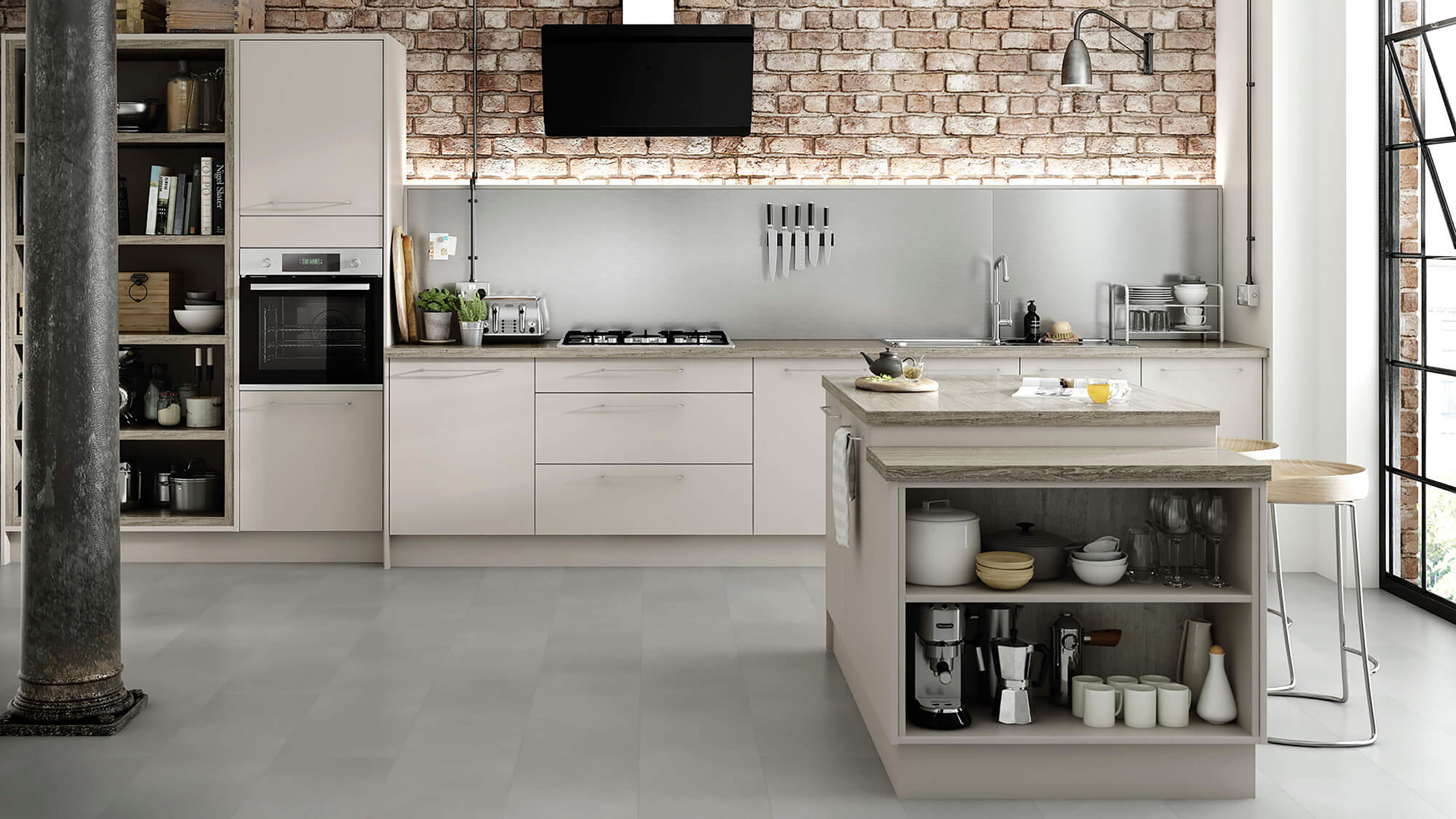
Take a peek at our round up of small kitchen island ideas — proof, if it were needed, that it is not only larger kitchens can offer the space for what is fast becoming a kitchen staple.
If you are still thinking that only those with sizeable kitchens can consider kitchen island ideas as part of their layout then it really is time to reconsider. The kitchen island comes in all shapes and sizes and in styles that are specifically designed to fit in well with compact spaces.
Here, we take a look at a whole range of kitchen island ideas for those with kitchens on the smaller side, from those that offer a flexible solution and can be moved in and out of the room as required, to designs that address more unconventional kitchen shapes.
Small kitchen island ideas for awkward kitchens
Not all kitchens are going to be perfectly square and in many cases, particularly when renovating a kitchen, you will need to work around existing features such as chimney breasts or lower than standard windows. None of this means that you can’t have all the kitchen features you want in the space, but it does mean that a more creative approach might well be necessary when designing a kitchen island.
When it comes to kitchen islands, there are plenty of designs that can be adapted to suit tricky kitchen layouts, from those that are split level to styles that feature curves and cut outs.
Whatever style you opt for, if you plan on using your island for sitting and eating at, do make sure there is enough space to do this comfortably.
"When designing seating around an island, the minimum width per person should be 600mm with 100mm on either side, and knee space should not be forgotten either," says Dawn Filkins, head of creative at Smile Kitchens. "Ensuring there is no less than 300mm of depth beneath the island will avoid bashed knees and make for a more comfortable meal whilst seated at the island."
Here, we take a look at some of the best kitchen islands we’ve come across for a range of kitchen sizes and shapes.
1. Embrace curves in small spaces
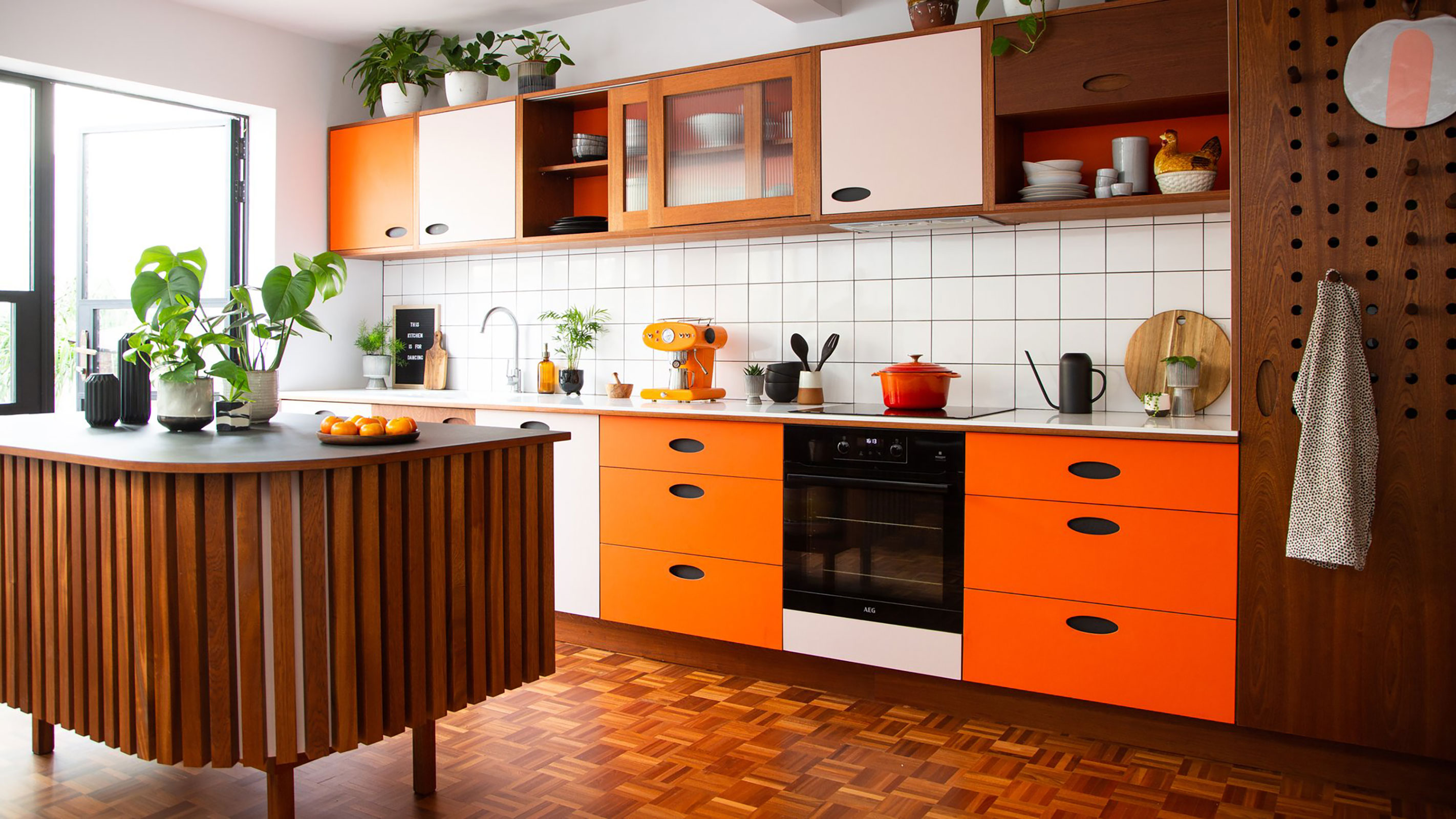
One of the best small kitchen ideas is to use curved edges and avoid too many straight lines and sharp edges.
Not only will including curves in your kitchen design lessen the visual impact of larger items, such as the kitchen island, but it will also make it physically easier to navigate. This is also a great idea from a safety perspective — rounded edges are less painful to walk into than those with points.
This eye-catching island was designed by Wood Works Brighton. It has been designed to have a floating look and features fluted solid Utile timber and a rubber worktop.
2. Add to a one-wall kitchen layout
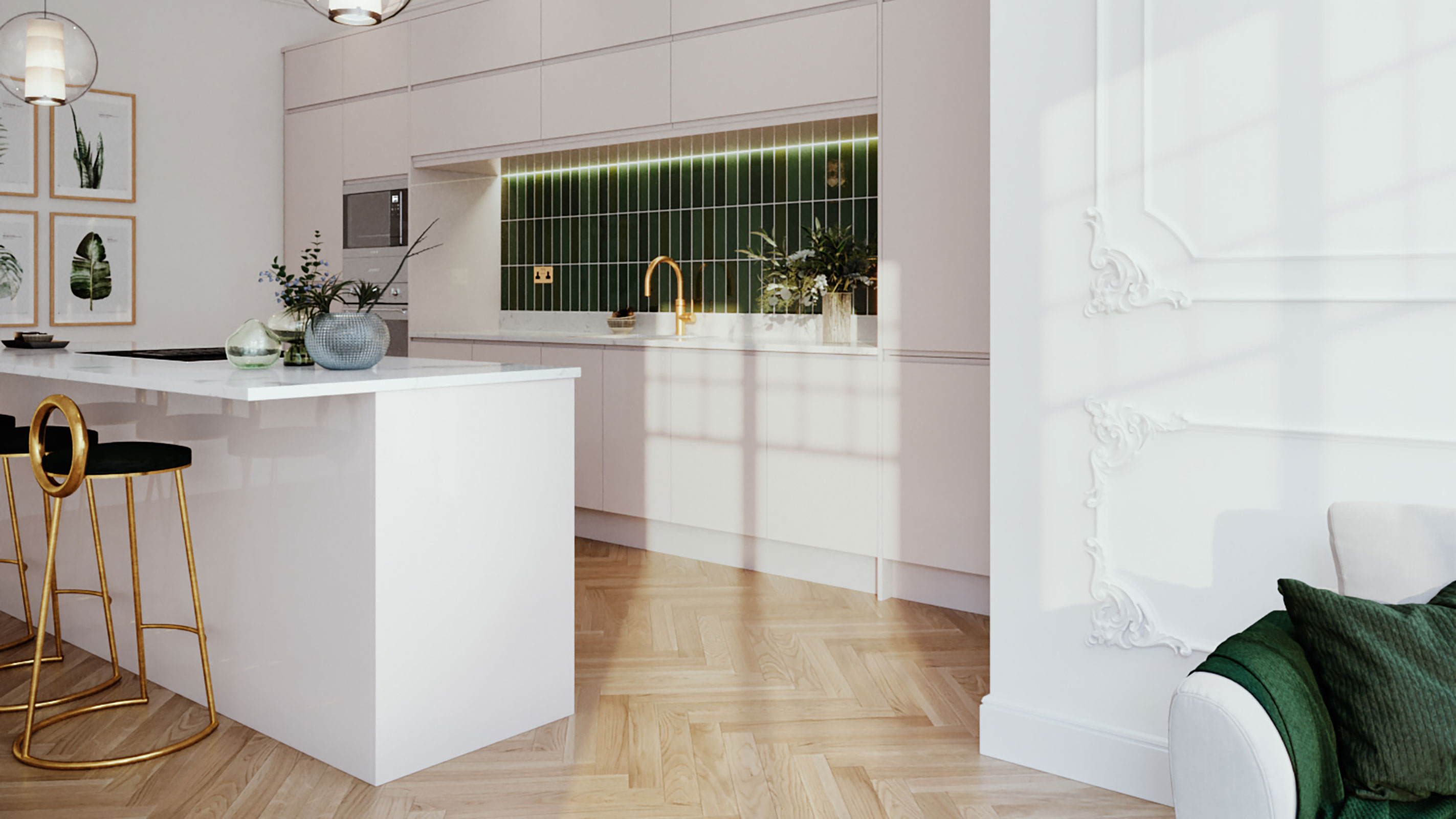
For those looking for narrow kitchen ideas, one-wall layouts work particularly well. This type of kitchen design basically incorporates a full wall of units, including full-height larder units, base units, drawers and cupboards.
If your kitchen is open plan to another space, adding an island to a one-wall layout is a great way not only to increase workspace and storage, but it will also help divide the two areas more clearly.
This kitchen, from Smile Kitchens, features a complete storage wall with an inset space for a sink and worktop. The island has been placed opposite to house the hob and dining area.
"‘For a seamless and coherent look, kitchen islands should typically be the same height as the rest of the cabinetry, usually around 910mm high," says Dawn Filkins of Smile Kitchens. "This will also make the transition between working in different zones of the kitchen feel more natural."
3. Minimise worktop clutter with hanging storage
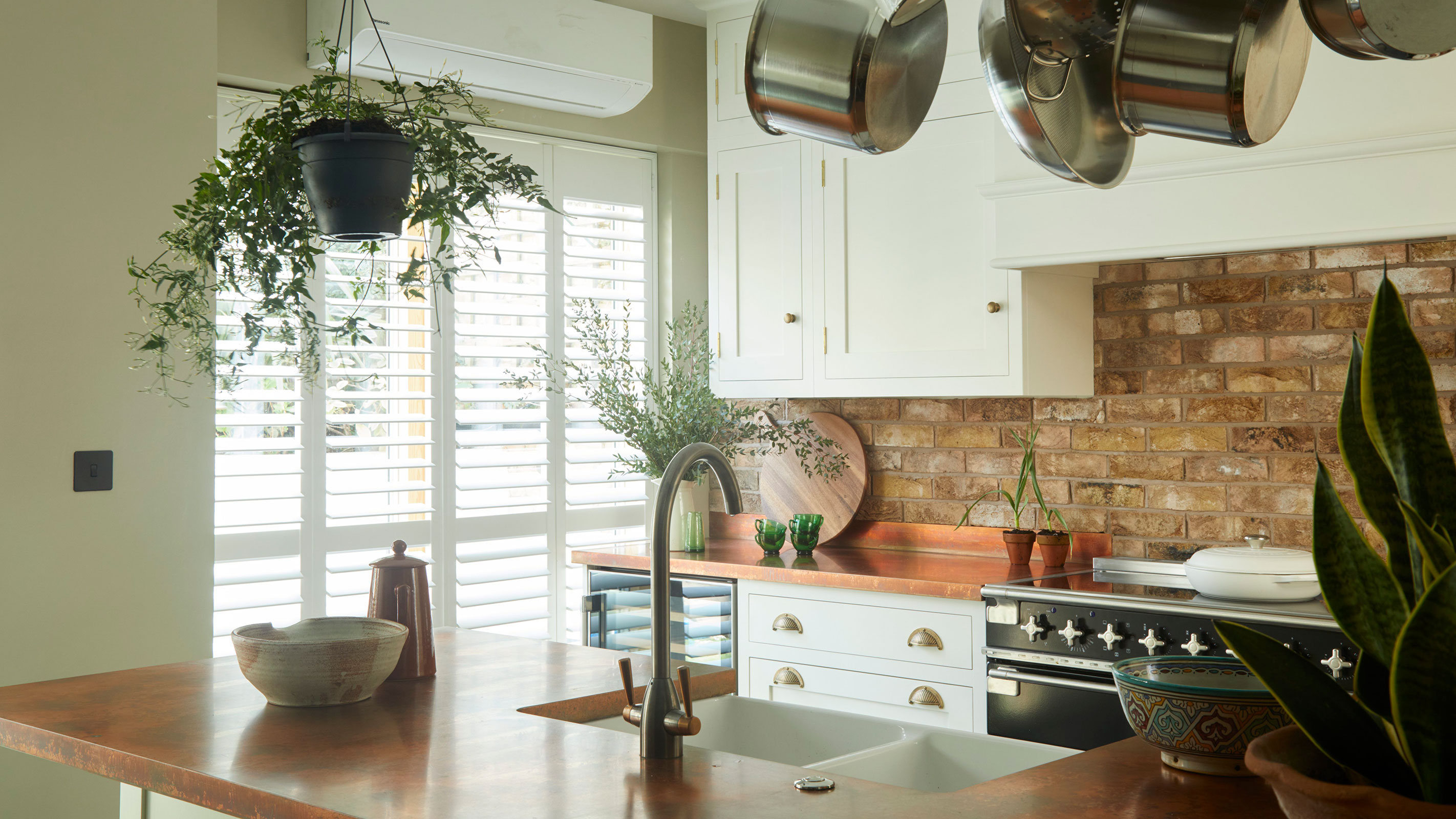
In small kitchens, every inch of worktop space counts and so avoiding clutter is crucial. However, depending on how compact your space is, it is likely that unit space could also be on the tight side.
While it is still possible to include an island into a kitchen of small proportions, do take the time to think through your kitchen storage ideas when it comes to this particular element.
Don't waste the area above your new island — instead use it to hang pots and pans to keep them within arm's reach. Do be sure to only store items that are in frequent use on your hanging racks though, otherwise this will just become another dust-gathering spot in your kitchen.
This beautiful island is from Olive & Barr and features a striking copper worktop.
4. Make the most of your island with a split-level design
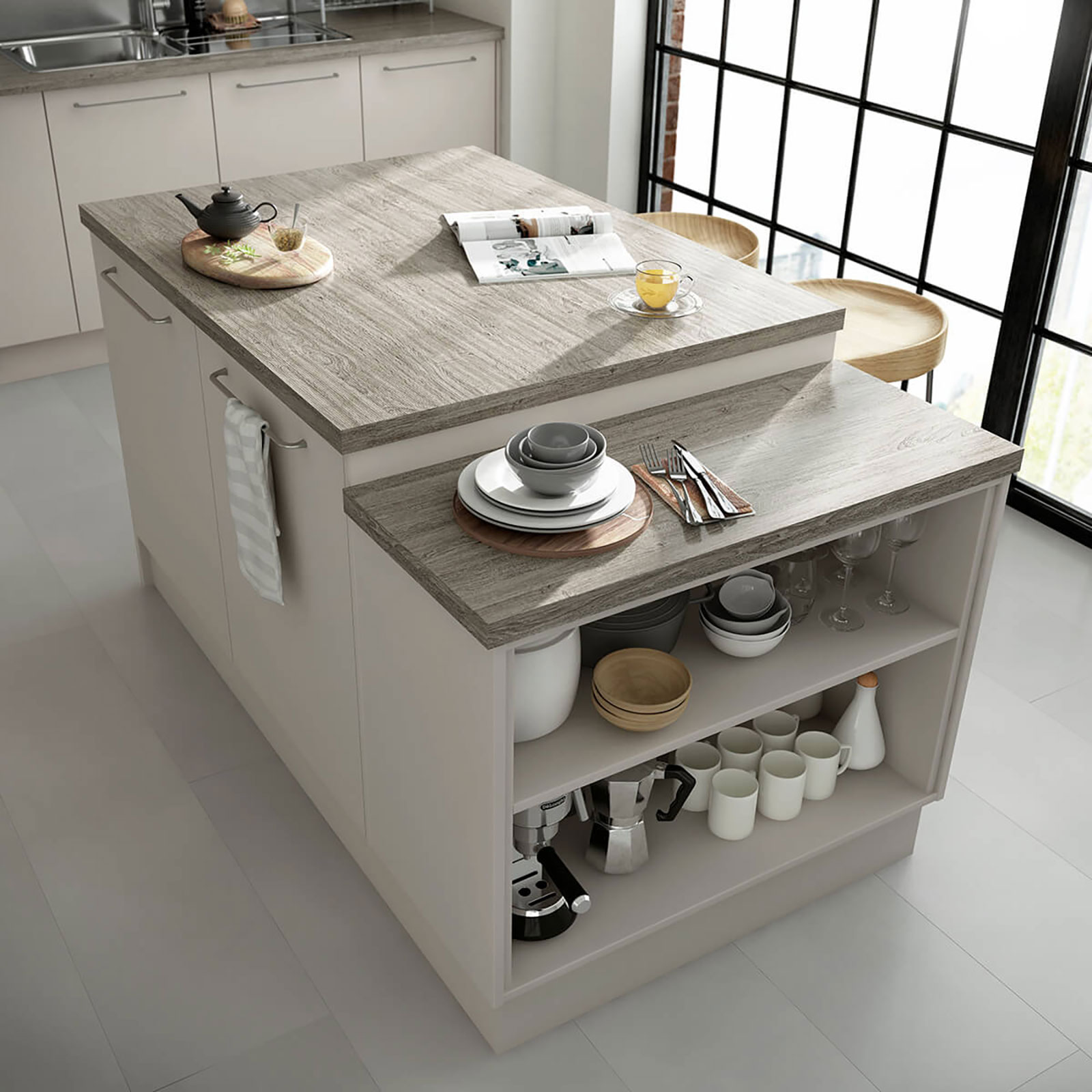
Kitchen island sizes need to be tailored to suit your individual space but in order to make the very most of your kitchen island, no matter its size, using a split level design will mean you can use it in a variety of ways, really maximising its usefulness.
A split level kitchen island, with a lower, table height section at one end to sit at on chairs as opposed to stools, provides a more comfortable, defined dining area.
This island, from Benchmarx Kitchens, not only features a lowered section but it also incorporates plenty of storage through open shelving and cupboards.
5. Supplement your kitchen island with a butchers block
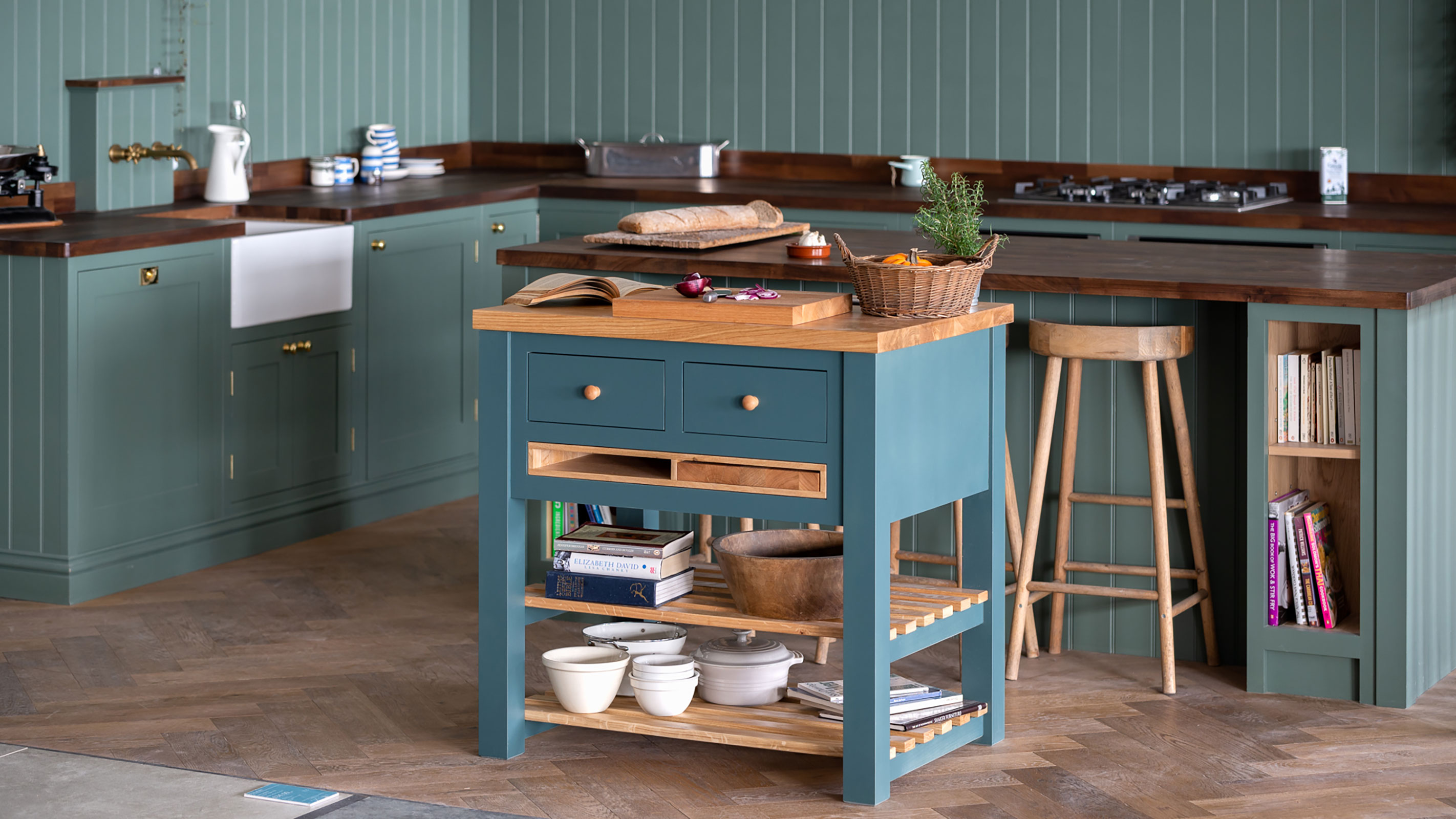
Butchers blocks not only make a great kitchen island alternative for those short on space, but they also can be used to add an additional work area.
Butchers blocks feature a hefty heavy duty chopping block on top of a unit that commonly incorporates some kind of storage beneath, such as drawers, shelves or a cupboard. In addition, they can also be fitted with space to hang items such as tea towels or utensils.
This unit is the Harvest Table from Olive & Barr. It costs £2,050.
6. Include a spot to perch within your island design
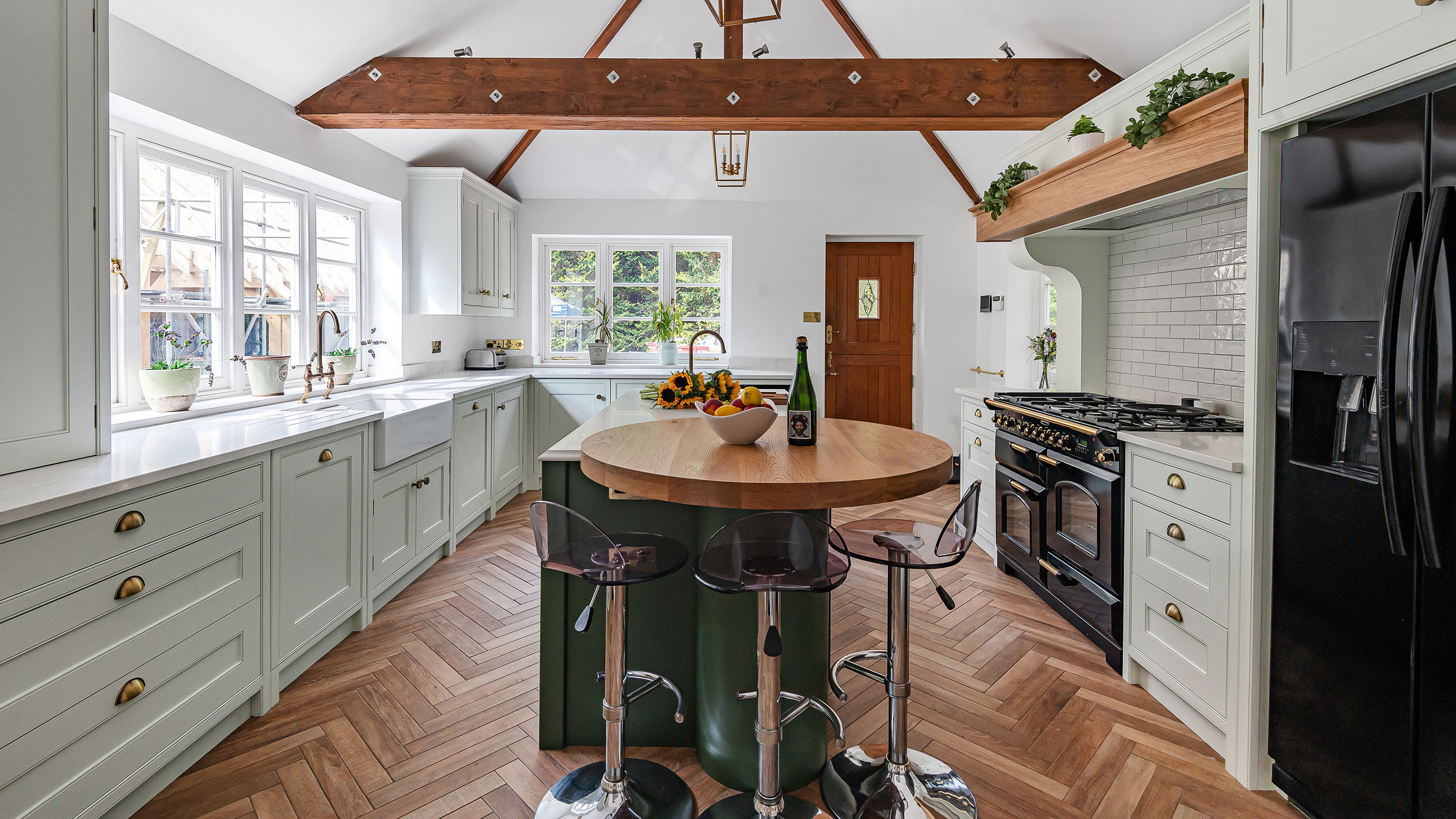
Whatever type of kitchen layout ideas you are considering, including a higher level section at which to sit on high stools or to stand at is an idea that can be adopted by those with pretty much any type of space.
In long, narrow spaces, using one end of a slimline kitchen island as your dining perch is wise as it won't encroach on your circulation space too much.
In this kitchen, from Et Lorem, a circular section at a slightly higher level than the rest of the island, has been designed in.
7. Use a small island to create a U-shaped layout
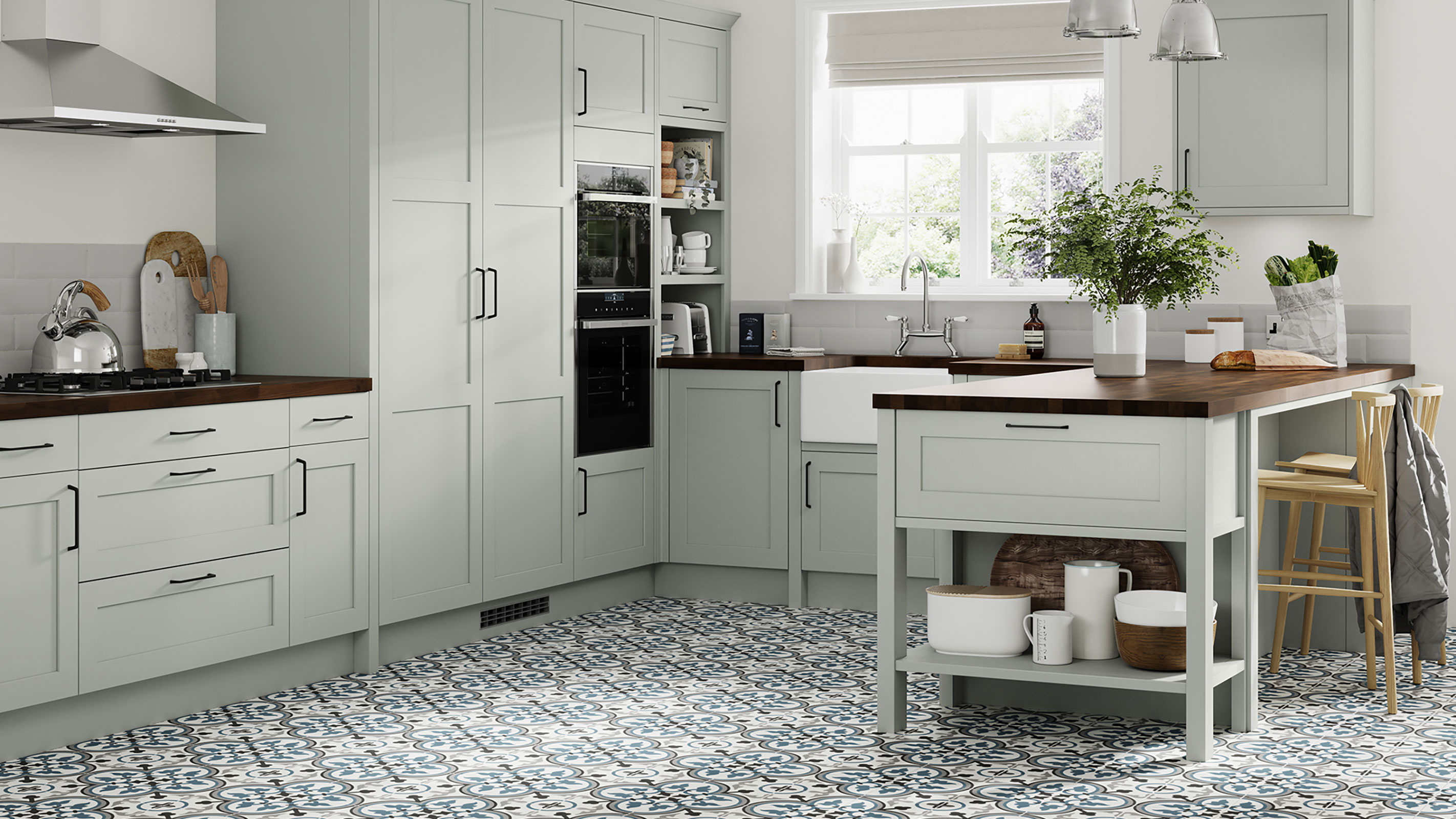
Those after L-shaped kitchen ideas should know that this type of space is the ideal candidate for islands — adding one to a run of units will instantly transform the space into a practical U-shaped layout and can help form a dining area where there wasn't room for one before.
In this kitchen, from Benchmarx Kitchens, the bulk of the storage requirements and appliances have been taken care of along two walls, while the addition of the deeper island section has created a spot to sit and eat — hanging pendant lights above the island sets it apart from the more practical areas.
8. Form a dining spot over your work surface
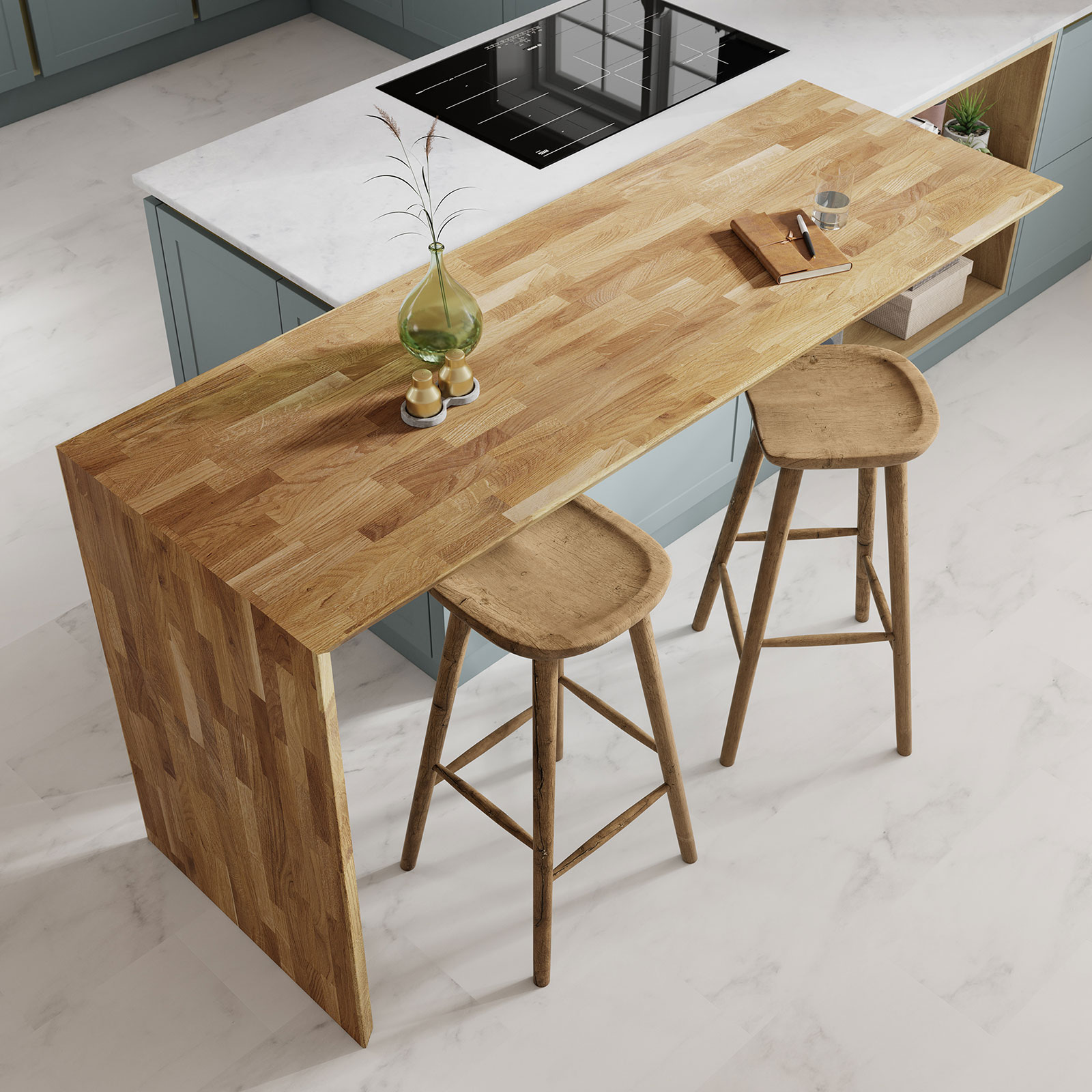
If you are wondering how to enhance your peninsular kitchen ideas then this one is for you.
Unlike an island, a kitchen peninsula is attached to a wall at one end and so is only accessible from three sides, unlike four as with an island unit. However, there is nothing to stop you adding to this kind of layout with an island — and this is a particularly good way to add a casual dining spot.
In this kitchen from Benchmarx Kitchens, a wooden kitchen island set higher than the breakfast bar has been used to create seating space.
9. Get an instant island with an off-the-shelf model
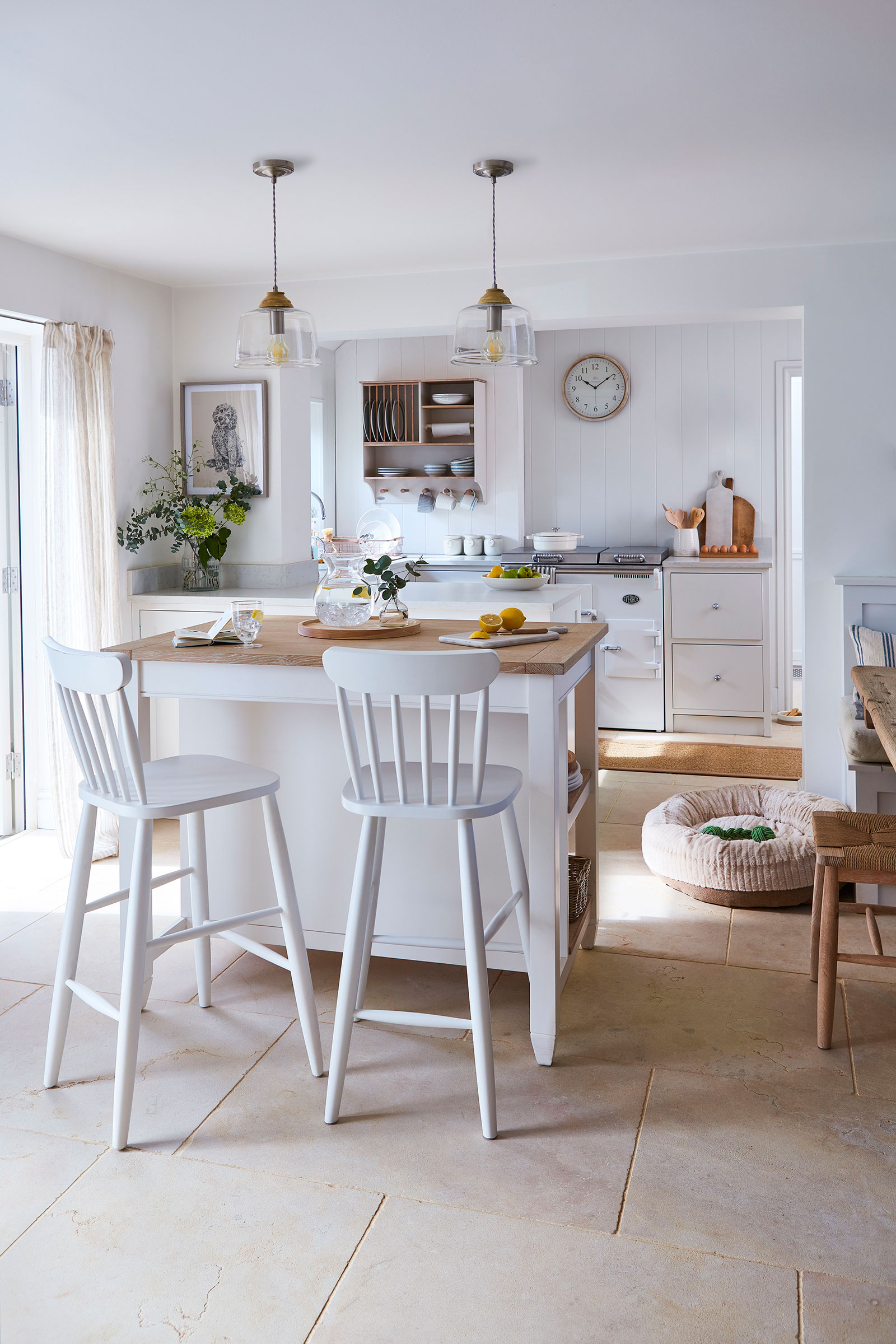
If you want to retro fit a kitchen island or are looking for ways to minimise your kitchen island costs, then buying an off-the-shelf model that you can assemble yourself is a great option.
While some designs come fully-assembled ready to be placed wherever needed, others come as flat-pack so you will need to be prepared to take some time to put it together.
Here, the Churchgate Ivory Kitchen Island, from Dunelm, ties in perfectly with the rest of the white scheme and has been paired with matching stools. It costs £699.
10. Minimise visual impact with gentle curves
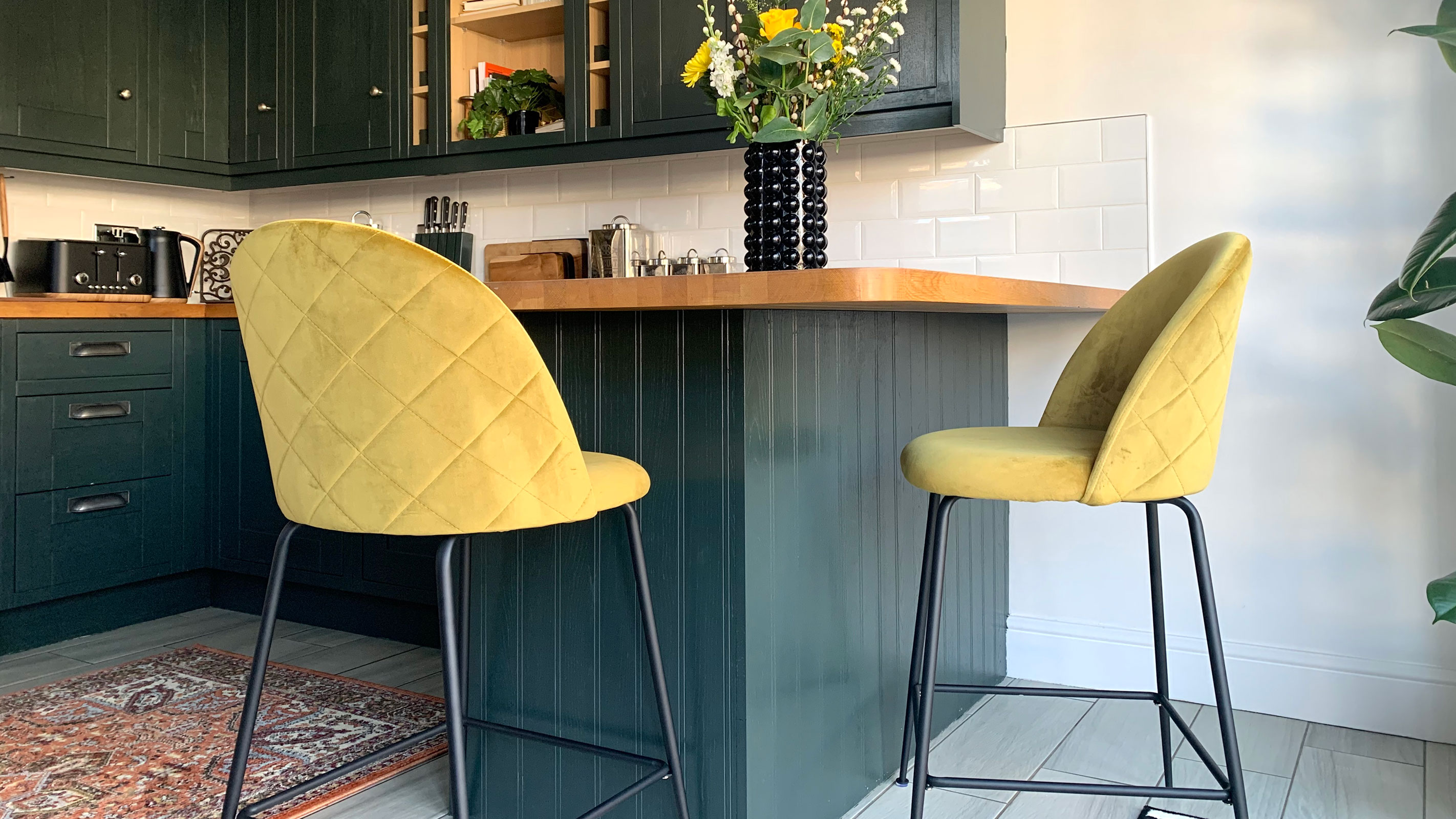
Using curved edges within your kitchen worktop ideas is a good way to ensure that the visual impact of your island is minimised.
Curves also work well in awkwardly shaped kitchens, where their softer lines distract the eye from the proportions of the room — plus they are a good idea for those with small children as their rounded edges are a little more forgiving when it comes to knocks and bumps.
11. Mix and match fitted and freestanding units
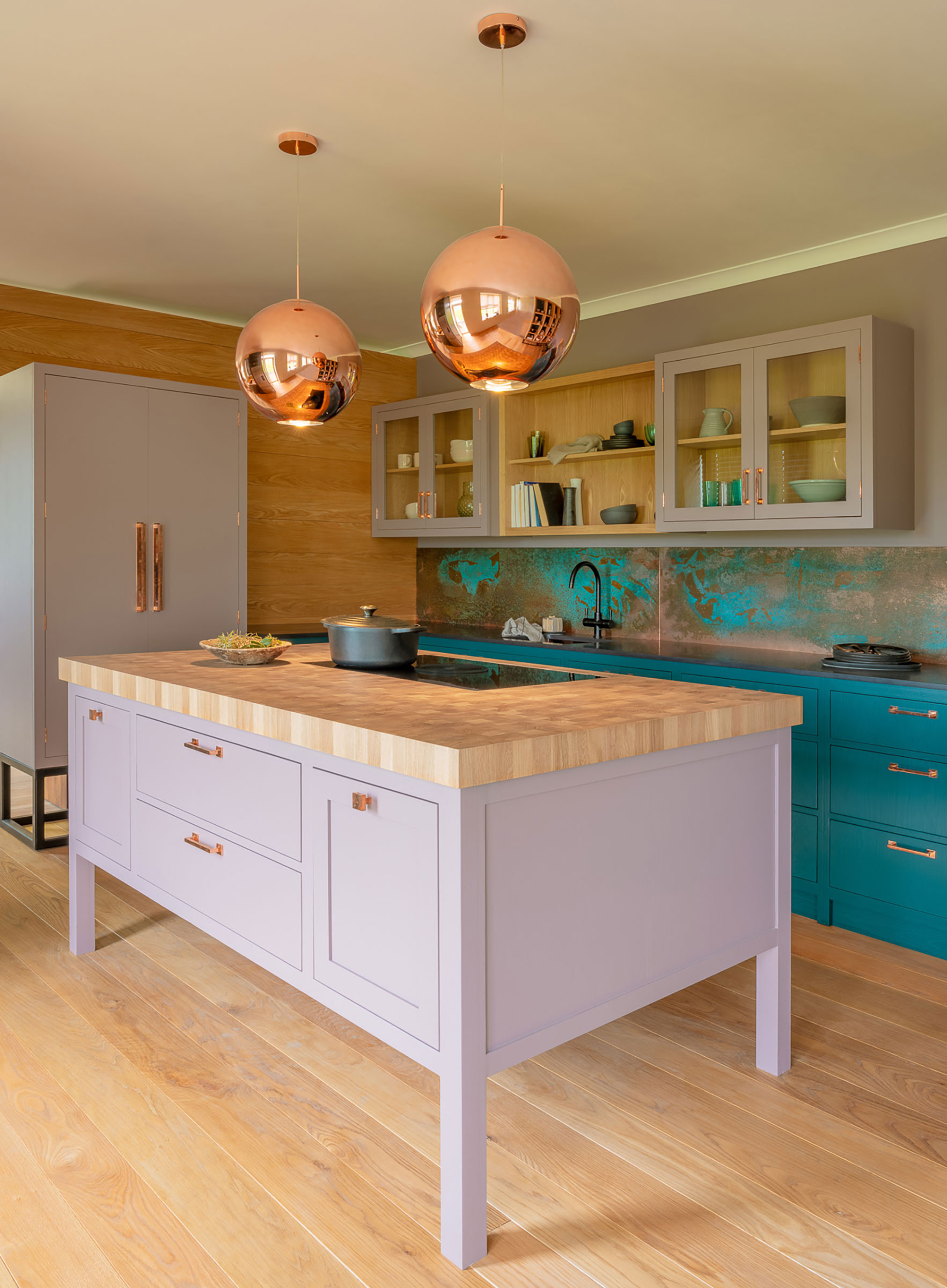
There is no reason why your kitchen units have to be fitted throughout the space — in fact, taking a more mix-and-match approach often works better.
When it comes to kitchen islands, choosing a freestanding design that is a little different in its colour or style to the rest of your units will ensure it stands out — plus you will have the option of moving it around if the need arises which can be really useful where you are short on space.
This dusky pink island, from Naked Kitchens, features a stunning oak end grain worktop, as well as plentiful storage, an integrated hob and downdraft extractor.
12. Enjoy wrap around dining at your island
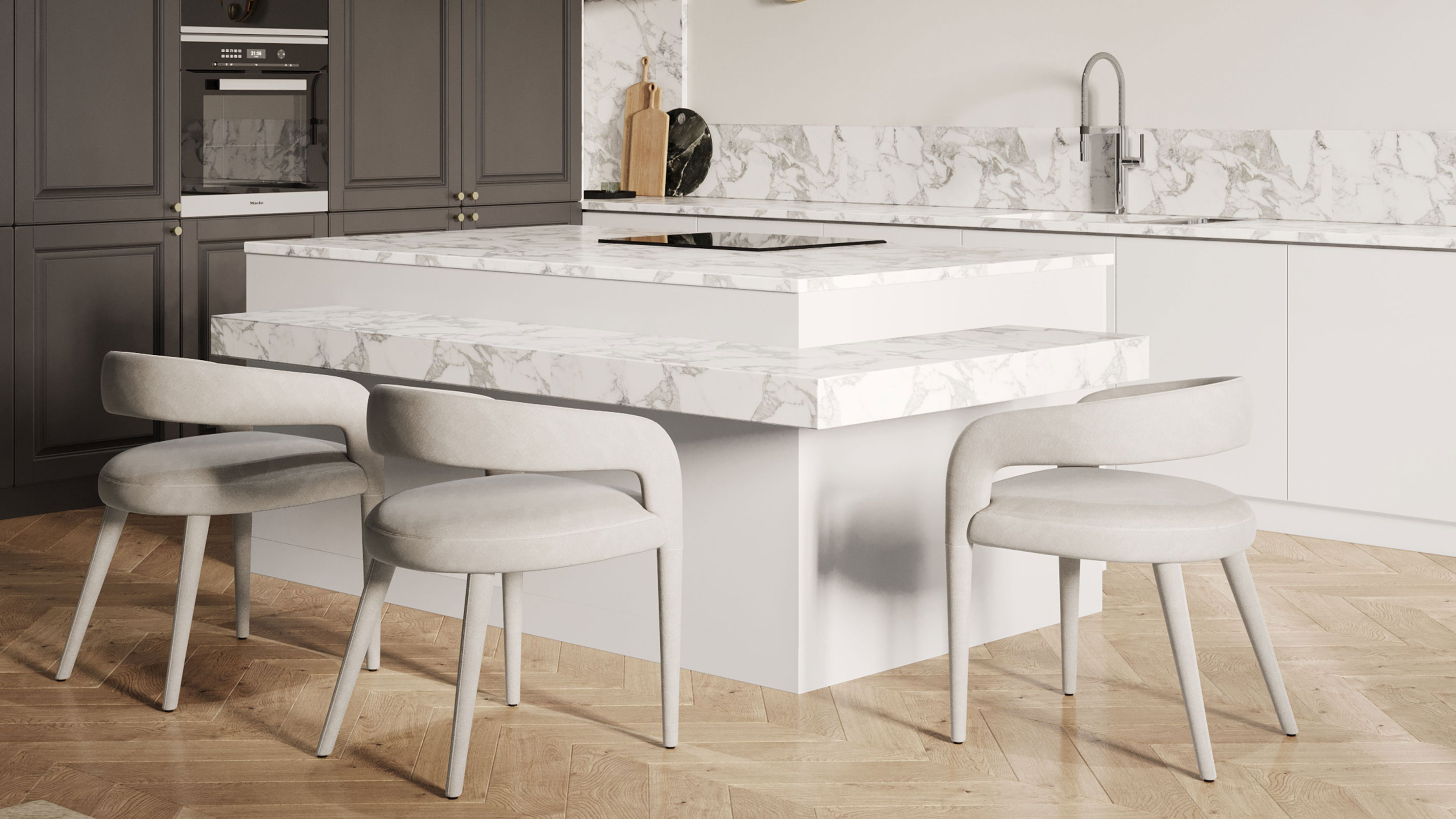
If you don't have the space for both a kitchen island as well as dining table in your kitchen then why not combine the two?
If a small raised area or just one end of the island won't provide enough space for your needs, create a wraparound dining section around two or three sides of the island instead and surround it with comfy chairs.
This all-white marble island, designed by Caffe Latte, has provided the homeowners with a central sociable hub in their kitchen.
13. Opt for a movable kitchen island for flexibility
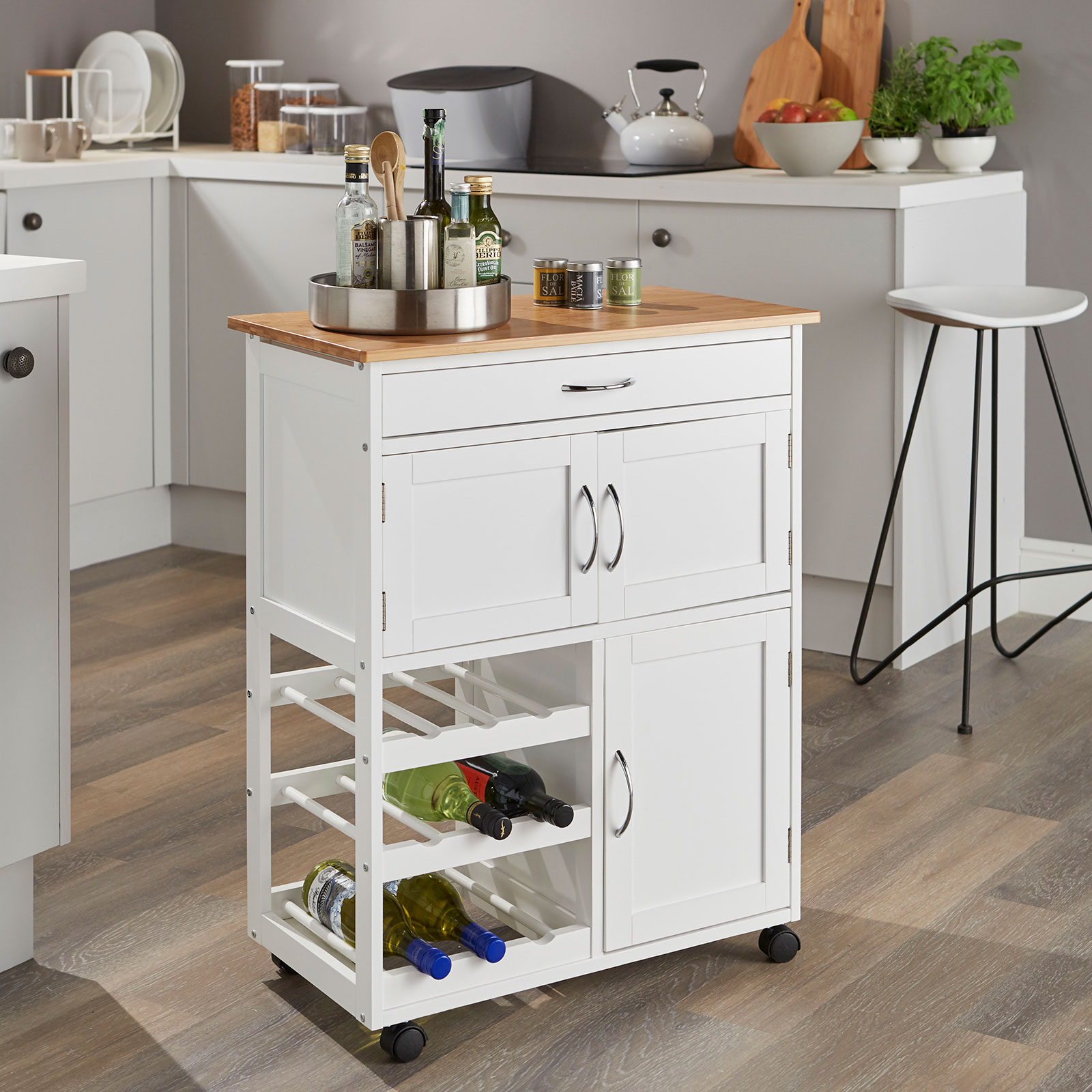
For those with very compact kitchens it may well be better to use an island on wheels or kitchen trolley rather than having a fixed unit. This way you can benefit from extra storage and work space when needed but push the island out of the way when you have guests or need to reclaim your floorspace.
This kitchen trolley with bamboo top from A Place For Everything features three cupboards, a full-width drawer and an integrated wine rack for nine bottles — even better it costs just £199.
14. Use a narrow design to zone a kitchen diner
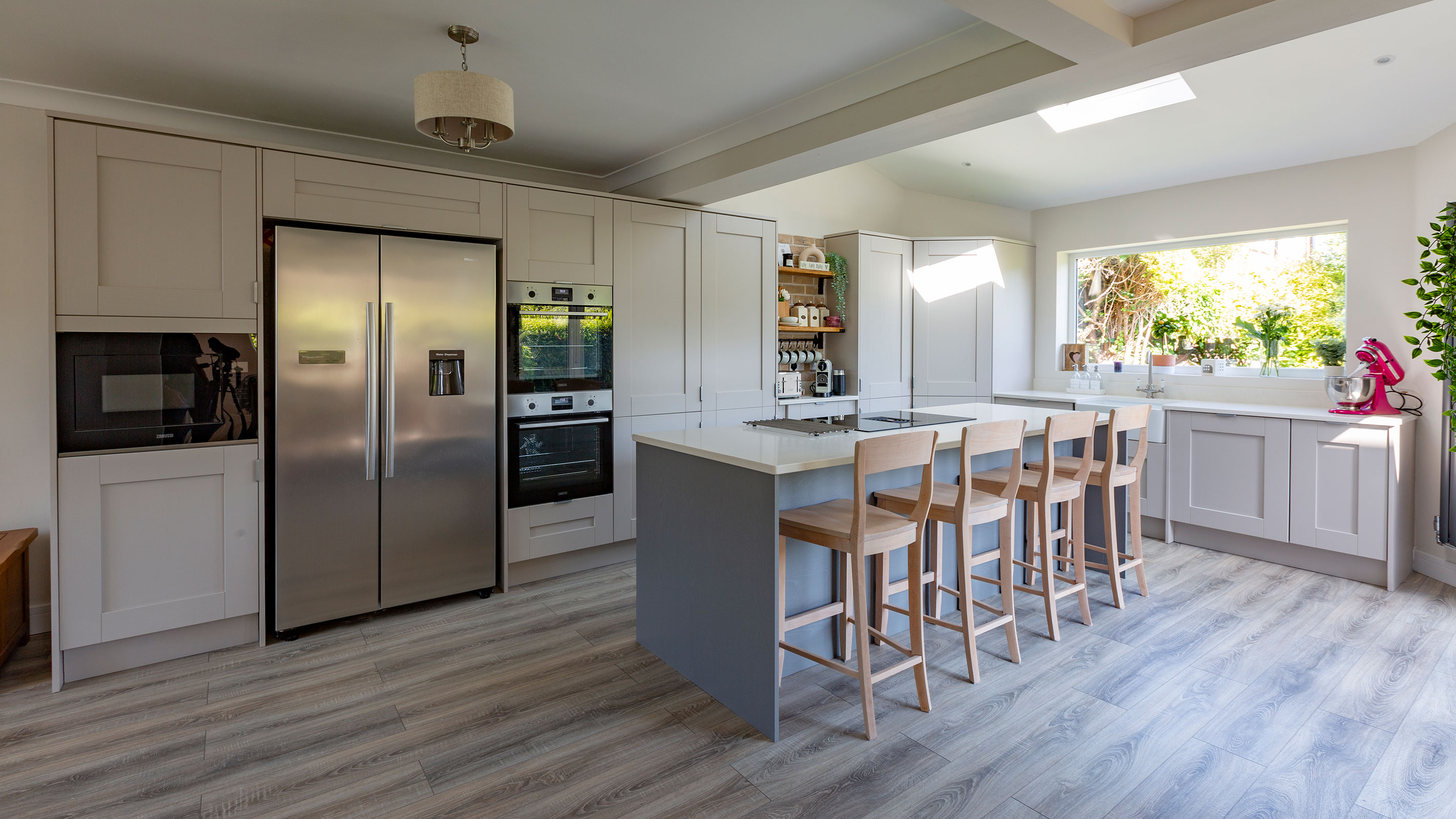
For those on the look out for kitchen diner ideas that incorporate an island but who are also mindful of space, using a longer, more slimline island design is a great way around the problem.
Islands are also a great way to break up an open space into separate zones. In this kitchen from Smile Kitchens, a narrow island has been used to divide the kitchen from the dining area that lies beyond.
15. Keep circulation space in mind at all times
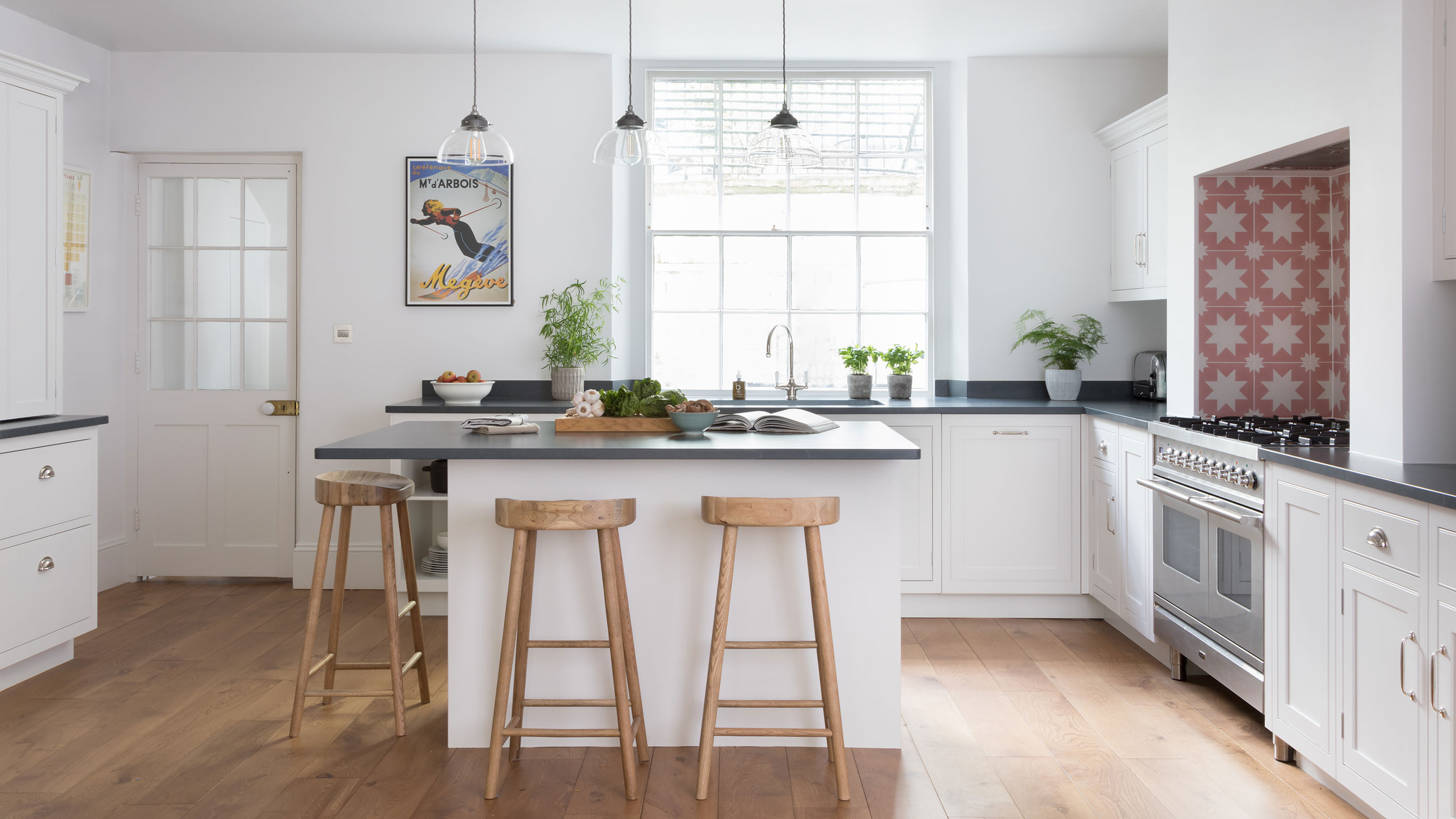
While you might be desperate to incorporate a kitchen island into your layout, sometimes it will just not be practically possible.
"A good rule of thumb when it comes to planning the placement of an island is to make sure you have adequate space to walk around it," says Dawn Filkins of Smile Kitchens. "At minimum, you should have 900mm all the way around. This avoids breaking the flow of the kitchen and eliminates awkward gaps."
If you are using your island as a seating space too then be sure to take into account the space needed to pull chairs and stools out.
Get the Homebuilding & Renovating Newsletter
Bring your dream home to life with expert advice, how to guides and design inspiration. Sign up for our newsletter and get two free tickets to a Homebuilding & Renovating Show near you.
Natasha was Homebuilding & Renovating’s Associate Content Editor and was a member of the Homebuilding team for over two decades. In her role on Homebuilding & Renovating she imparted her knowledge on a wide range of renovation topics, from window condensation to renovating bathrooms, to removing walls and adding an extension. She continues to write for Homebuilding on these topics, and more. An experienced journalist and renovation expert, she also writes for a number of other homes titles, including Homes & Gardens and Ideal Homes. Over the years Natasha has renovated and carried out a side extension to a Victorian terrace. She is currently living in the rural Edwardian cottage she renovated and extended on a largely DIY basis, living on site for the duration of the project.

